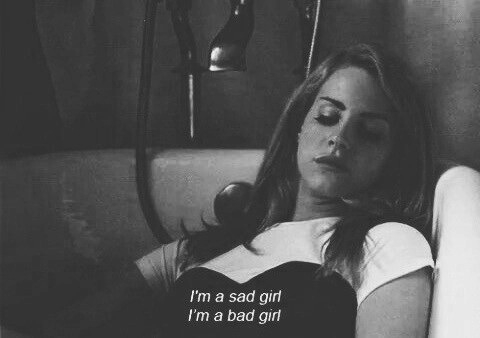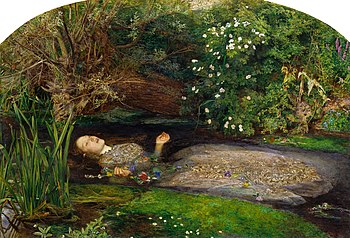Bronwen K. Bradshaw
Staff Writer

In the years 2014 through 2016, I found my middle school self scrolling Tumblr for hours at night, looking at blog posts of Sylvia Plath quotes, Lana Del Rey Lyrics, and images of young, thin girls with captions like, “It kills me to love you.” I related with these people, thinking, “I’m young and sad, too!” Tumblr users somehow turned their pain into something beautiful, or in other words, an aesthetic. Tumblr provided a community of young girls like me who felt too embarrassed or ashamed of what was going on inside their heads and instead vocalized their pain and suffering to strangers online.
However, this community can also be detrimental. When being sad or depressed is a source of connection and common interest, it can become difficult for someone to get the support to seek help for mental illness. Instead, like me, the community submerged themselves into feelings of sadness not as something to get help for but as something too profound and beautiful for the outside world to understand. Not only can these types of blog posts undermine mental illness, but they also romanticize it.
There has been a resurgence in the sad girl aesthetic through TikTok that is reminiscent of the Tumblr trends I saw as a young teen. Seeing this similarity, I wanted to explore the reasoning behind romanticizing mental illness, how the tragic female has been culturally apparent across many periods, and what that figure has transformed into today.
Shakespeare is known for creating tragic female characters, such as Juliet in Romeo & Juliet, who killed herself for love, and Ophelia, a beautiful woman who was driven insane and drowned herself in Hamlet.
The oil painting “Ophelia,” by Sir John Everett Millais, portrays Ophelia as elegant in her death. Flowers surround her, and she wears beautiful attire as she lies with her arms stretched out, accepting her fate. The poppy flowers symbolize beauty and Ophelia’s impending death, emphasizing the correlation of beauty with dismay and destruction.

French poet Charles Baudelaire also discussed the death of beautiful women. In his poem “A Carcass,” Baudelaire remarks on the beauty of a woman’s corpse, taking artistic pleasure in the sight of her feasted on by nature. Even Edgar Allan Poe stated in his essay “The Philosophy of Composition” that “the death, then, of a beautiful woman is, unquestionably, the most poetical topic in the world.”
In 1947, a woman named Evelyn McHale committed suicide by jumping off the Empire State Building and landing on the hood of a car. Robert Wiles, a photographer, took a photograph of McHale that “Life” magazine published; the image is often referred to as “the most beautiful suicide.” Marilyn Monroe is another example of how the media and society have profited from a woman’s beauty and pain, as evidenced by the 2022 Netflix film “Blonde.”
The idealization and exploitation of tragic women for the sake of art has spanned centuries and is still prevalent in today’s society. An article by Fredrika Thelandersson for Capacious: Journal For Emerging Affect Inquiry discusses the idealization of sadness in society’s culture, describing the phenomenon of melancholia. Thelandersson states, “[melancholia] is something that touches more upon sadness in general, a sadness that is creative and inspiring, rather than the debilitating ‘stuck-ness’ associated with depression.”
With the popularity of TikTok, the sad girl aesthetic has resurged, achieving a presence similar to what it had on Tumblr’s platform in the 2010s. The hashtag #sadgirl has over 16.1 billion views, and #Tumblr has over 6.8 billion views. The growth of social media over the last 10 years has caused rapid cycles of trends, and the current rise of the early 2000s to 2010s in today’s pop culture may also contribute to the sad girl revival.
In recent years, women have taken back this archetype as a means of self-expression and communicating mental health issues with each other. TikTok has been a great avenue for discovering new interests and trends along with other art and poetic devices for self-expression, but we should be cautious about using language or terminology that generalizes discourses about mental health.


Really interesting breakdown of Trisha’s journey. It’s wild how much power a rebrand holds in the influencer world. Curious to see what Part II reveals.
CLICK HERE
LikeLike